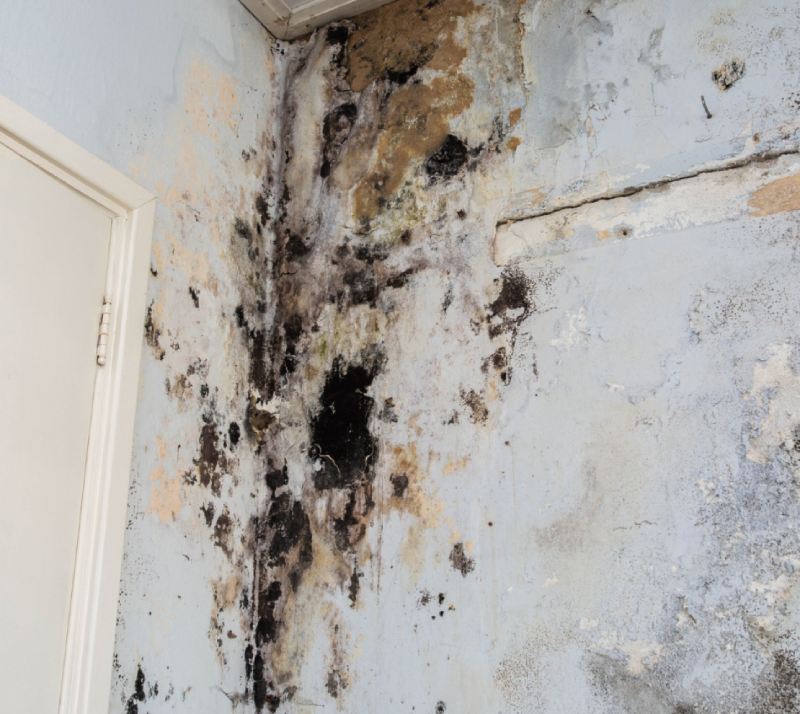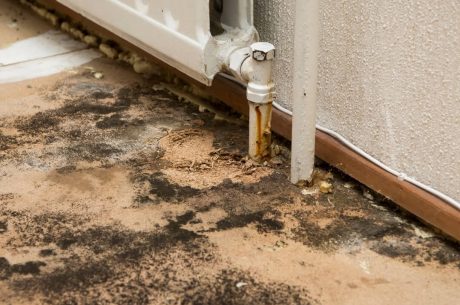Water damage is an issue that many homeowners fear. It can sneak up on you without warning and cause serious problems if not addressed quickly. Understanding the hidden dangers of water damage and the importance of rapid restoration can save you from costly repairs and health hazards. The consequences of water damage extend beyond the visible, often affecting the very foundation of your home and the well-being of those living within.
The Hidden Dangers of Water Damage
Structural Damage
Water can weaken the structure of your home over time. It seeps into walls, floors, and ceilings, causing wood to rot and metal to rust. If ignored, this can lead to severe structural issues, potentially making your home unsafe. Over time, this deterioration can compromise the integrity of load-bearing walls and foundational supports, leading to costly repairs or even rendering parts of your home uninhabitable.
The process of structural damage is often slow and insidious, making it difficult to detect until significant harm has already occurred. Regular inspections and immediate responses to even minor water intrusions are essential in preventing long-term damage. Ignoring early signs can lead to catastrophic failures such as collapsing ceilings or weakened foundations that can endanger the occupants and lead to extensive financial burdens.
Mold Growth

Mold is one of the most common and dangerous consequences of water damage. It can start growing within 24 to 48 hours in damp conditions. Mold not only damages property but also poses health risks, including respiratory issues and allergic reactions. Mold spores can spread quickly throughout your home, contaminating air quality and exacerbating conditions such as asthma or chronic respiratory illnesses.
The presence of mold can also decrease your property value, as it signifies underlying issues with moisture control and can be costly to remediate. Effective water damage restoration includes thorough drying and dehumidifying to prevent mold growth, alongside professional mold remediation services if an infestation occurs. Homeowners should remain vigilant for signs of mold, such as musty odors or visible spores, and take immediate action if detected.
Electrical Hazards
Water and electricity are a dangerous combination. Water damage can compromise your electrical system, leading to shorts, shocks, or even fires. It’s crucial to have a professional inspect and repair any potential electrical issues as soon as possible. The risk of electrical hazards increases in areas where water has penetrated walls or ceilings, potentially coming into contact with wiring and outlets.
Neglecting electrical inspections post-water damage can result in latent dangers that may manifest unexpectedly, posing severe safety risks. Regular monitoring and maintenance of electrical systems can prevent accidents and ensure your home remains safe. Upgrading to waterproof electrical installations in flood-prone areas can also mitigate potential risks.
Health Risks
Standing water and damp conditions create a breeding ground for bacteria and pests. This can lead to health problems, particularly for those with allergies or asthma. Contaminated water can also spread diseases, making quick water damage repair essential. The presence of pests, such as mosquitoes and rodents, can further exacerbate health issues and lead to additional property damage.
Why Quick Restoration is Crucial
Preventing Further Damage
The longer water sits, the more damage it can cause. Quick restoration helps prevent further structural damage, mold growth, and health hazards. Acting fast can save you from more extensive and costly repairs. Time is of the essence, as even a small delay can exponentially increase the scope and cost of restoration efforts.
Quick action can also prevent the escalation of water damage from one area to another, limiting the extent of repairs needed. Preventing secondary damage not only safeguards your property but also reduces the disruption to your daily life, allowing you to return to normalcy sooner.
Cost-Effective Solution
Rapid water mitigation is more cost-effective than waiting. The sooner you address the problem, the less damage there will be, leading to lower repair costs. Insurance companies may also cover more of the repair costs if you act quickly. Early intervention can mean the difference between simple drying and dehumidification versus extensive structural repairs and mold remediation.
Protecting Your Health
Quick action reduces the risk of mold and bacteria growth, protecting your health and the health of your family. It ensures that your living environment remains safe and comfortable. A prompt response mitigates the risk of long-term exposure to harmful substances that can cause chronic health issues.
Steps to Take for Water Damage Restoration
Stop the Water Source
The first step in water damage restoration is to stop the source of the water. Turn off the main water supply if necessary and repair any broken pipes or appliances. Identifying and addressing the source prevents further water intrusion and sets the stage for effective restoration efforts.
Promptly stopping the source of water also minimizes the amount of water that enters your home, reducing the scope of cleanup required. This initial step is critical and should be performed as soon as water damage is detected to prevent further complications and expedite recovery.
Remove Excess Water
Using pumps, wet vacuums, and other equipment, remove as much water as possible. The faster you can get rid of standing water, the better. Removing excess water minimizes the risk of structural damage and mold growth, allowing for a more straightforward restoration process.
Effective water removal also decreases the likelihood of electrical hazards by reducing the chance of water coming into contact with electrical systems. Utilizing proper equipment ensures that water is removed efficiently, paving the way for subsequent drying and dehumidifying efforts.
Dry and Dehumidify
Use fans, dehumidifiers, and open windows to dry the affected area. This helps prevent mold growth and further damage to your property. Proper drying techniques are essential to eliminate moisture that can lead to mold infestations and structural degradation.
Incorporating professional-grade equipment can expedite the drying process and ensure thorough moisture removal. Continuous monitoring of humidity levels during this stage is crucial to confirm that the environment returns to a safe, dry state, preventing future issues.
Clean and Sanitize
Clean and sanitize all affected areas to remove any contaminants. This is especially important if the water damage involves gray or black water. Thorough cleaning and sanitization eliminate bacteria and pathogens, restoring a safe living environment.
Using appropriate cleaning agents and techniques ensures all contaminants are effectively neutralized. This step is critical in preventing health risks and maintaining hygiene standards, particularly in areas affected by more hazardous forms of water damage.
Repair and Restore
Finally, repair any damaged structures and restore your home to its pre-damage condition. This may involve replacing drywall, flooring, and other materials. Comprehensive restoration not only addresses visible damage but also ensures that underlying issues are resolved, preventing future problems.
Engaging professional restoration services can guarantee that repairs are conducted to the highest standards, preserving the value and safety of your home. This final stage solidifies the efforts made during the restoration process, returning your home to a secure and comfortable state.
When to Call in the Professionals
While some minor water damage can be handled on your own, there are times when professional help is necessary. If you’re dealing with large-scale damage, black water, or potential structural issues, it’s best to call in a water damage restoration expert. Professionals bring specialized equipment and expertise to address complex situations effectively, minimizing long-term damage and health risks.
Their experience allows them to identify hidden issues that may not be apparent to untrained eyes, ensuring a thorough restoration process. Involving professionals can also expedite the claims process with your insurance company, as they provide detailed documentation and assessments of the damage.
Conclusion
Water damage requires immediate action to avoid costly repairs and health risks. Whether it’s a small leak or major flooding, prompt emergency water damage restoration is essential for protecting your home and family. Don’t wait—take swift action to mitigate damage and restore your home. For expert water restoration services, contact PuroClean of Ridgewood today!


